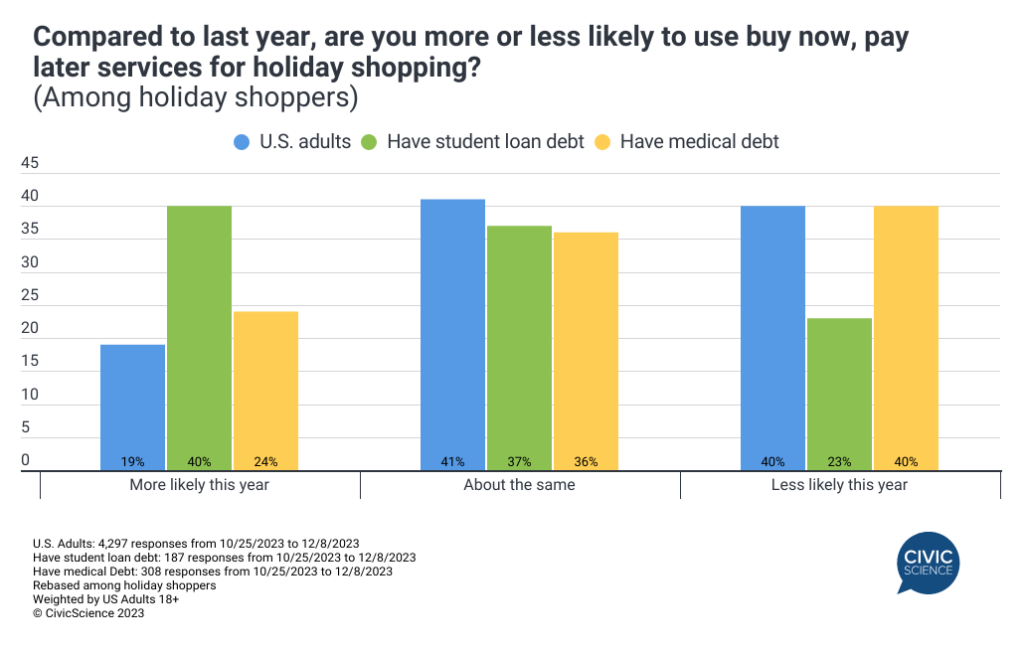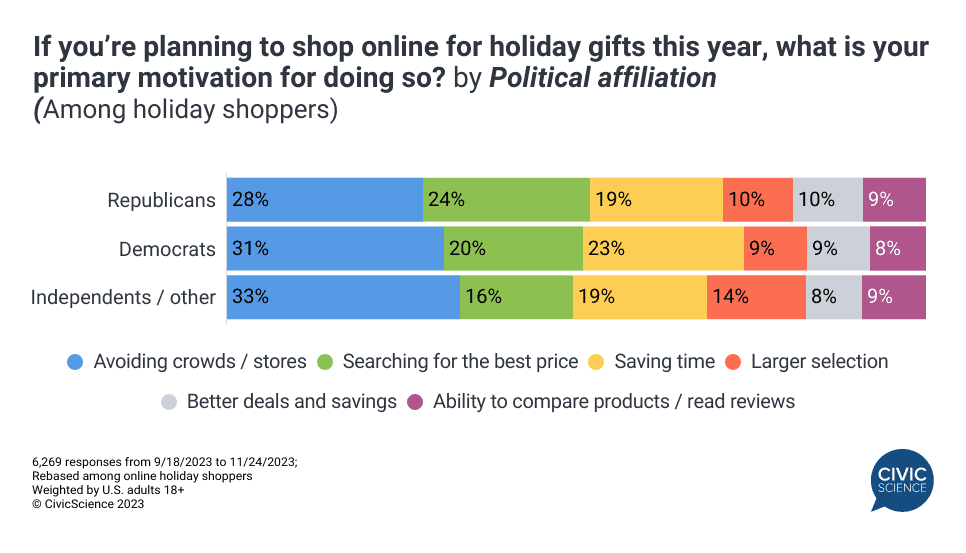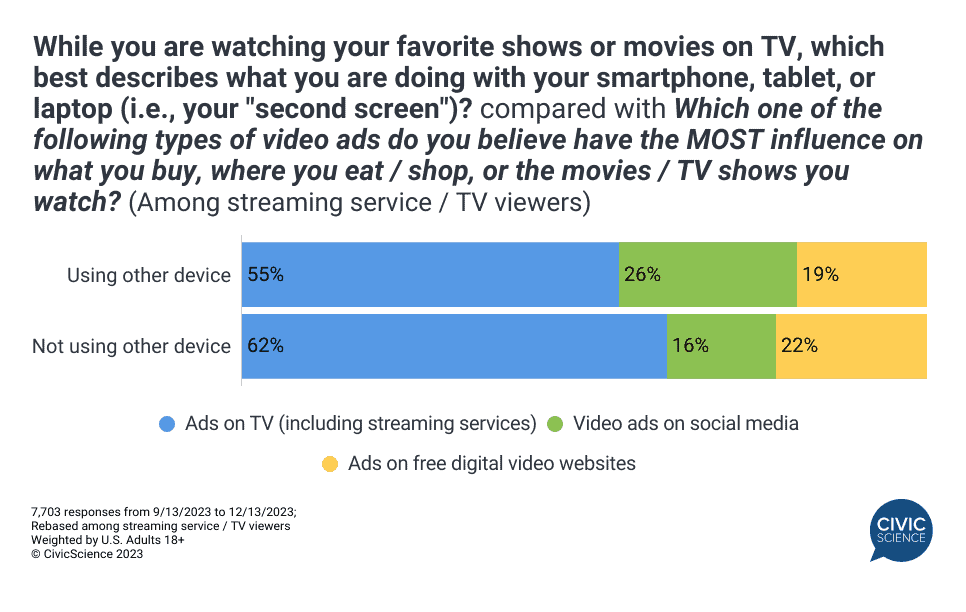CivicScience continually tracks current and anticipated consumer trends. Here are three key insights marketers should know this week. All insights are derived from the CivicScience Social | Political | Economic | Cultural (SPEC) Report, a weekly report available to clients covering the latest news and insights. Get in touch to learn more.
1. Americans with pre-existing debt are more likely to use buy now, pay later services for holiday shopping this year.
Existing medical and student loan debts increase the likelihood that consumers will use buy now, pay later (BNPL) services. CivicScience data show student loan holders and medical debt holders are 17 and 10 percentage points, respectively, more likely than the average U.S. adult to report using BNPL programs. They’re also much more likely to say their likelihood of using them for holiday shopping has increased this year. This could have major impacts on minority communities, who are more likely to have medical and/or student loan debt – research from the Consumer Financial Protection Bureau shows that African American adults are disproportionately affected by the financial implications of BNPL programs.

Join the Discussion: Do you think “buy now, pay later” services are generally positive or negative?
2. Political affiliation shapes Americans’ holiday shopping preferences in-store and online.
Much like differences in gifting desires, Democrats and Republicans also differ when it comes to shopping for their holiday gifts in stores versus buying them online. Republicans (32%) and Independents (33%) are more likely than Democrats (26%) to say their favorite parts of holiday shopping in stores are the music, decorations, and displays. Democrats, meanwhile, are more likely to say the best part of shopping in stores is the in-store holiday deals.
In terms of online shopping, Republicans are more likely to say their primary motivation for shopping online is being able to shop around for the best price. Democrats are more likely than Republicans and independents to say they shop online in order to save time. Independents are most likely to cite avoiding the crowds as their primary driver for gift shopping online.

Want to see more in-depth consumer political insights as the 2024 presidential election approaches? The CivicScience 2024 Election Mindset Tracker analyzes and predicts how developments in the 2024 presidential race will affect people, markets, and the economy. Click here to learn more.
3. Second screen usage while watching TV or streaming factors into the ads that resonate with consumers.
Most Americans (66%) say they are on their phone or using a ‘second screen’ while watching shows and movies. The most common second screen activities are viewing mobile apps, games, or content unrelated to the show being watched (25%) and texting/checking email (17%).
Second screen usage plays a role in the ads Americans say they’re influenced by. For instance, Americans who are not on a second screen while watching TV/streaming services are seven percentage points more likely to say that TV/streaming ads have the most influence on their purchases. Second screen-users, meanwhile, are 10 points more likely to be influenced the most by video ads on social media platforms.

Take Our Poll: How likely are you to be scrolling on your phone or other mobile device while you watch TV or a video stream?
Want to see more of the in-depth consumer insights found in this report not covered here? Clients receive the SPEC Report in full, plus access to real-time insights driven by our database of over 500K questions. Start here to see it in action.








